Copenhagen, if you’re lucky, can be a place that bites swift but deep. Though a weekend is suffice time to cover the city’s compact topography, it’s a chord that will likely resonate with you for a lifetime; it is rich in good style, great chairs, superb dining, and its lyrical rhythms – steady rotations of bicycle wheels, the evocative smokey linger of courtyard bonfires in winter, nude swimming in summer, the soft colours, the clean fragrance of a city with a clean conscience – are just irresistible.
It’s a sure bet that’ll it’ll place all sorts of marks on you: a lightning-in-the-stomach kind of love, a contention with life that will grapple with you along the harbourfront that bobs with small boats, in the tiny wine bars, and the well-designed dining rooms, all the way back home. Come here and let it file down your inner serrations with the soft, finely tuned pleasures it is always willing to showcase. They say you should just surrender to the inevitable haemorrhage of krone from your pocket. Expensive, perhaps; transcendent, without doubt, with an effect that will likely make you question your current life situation, the way in which only a newfound love interest can. And for that, let us guide you gently along the way.
The rooms to book
Hotel SP34
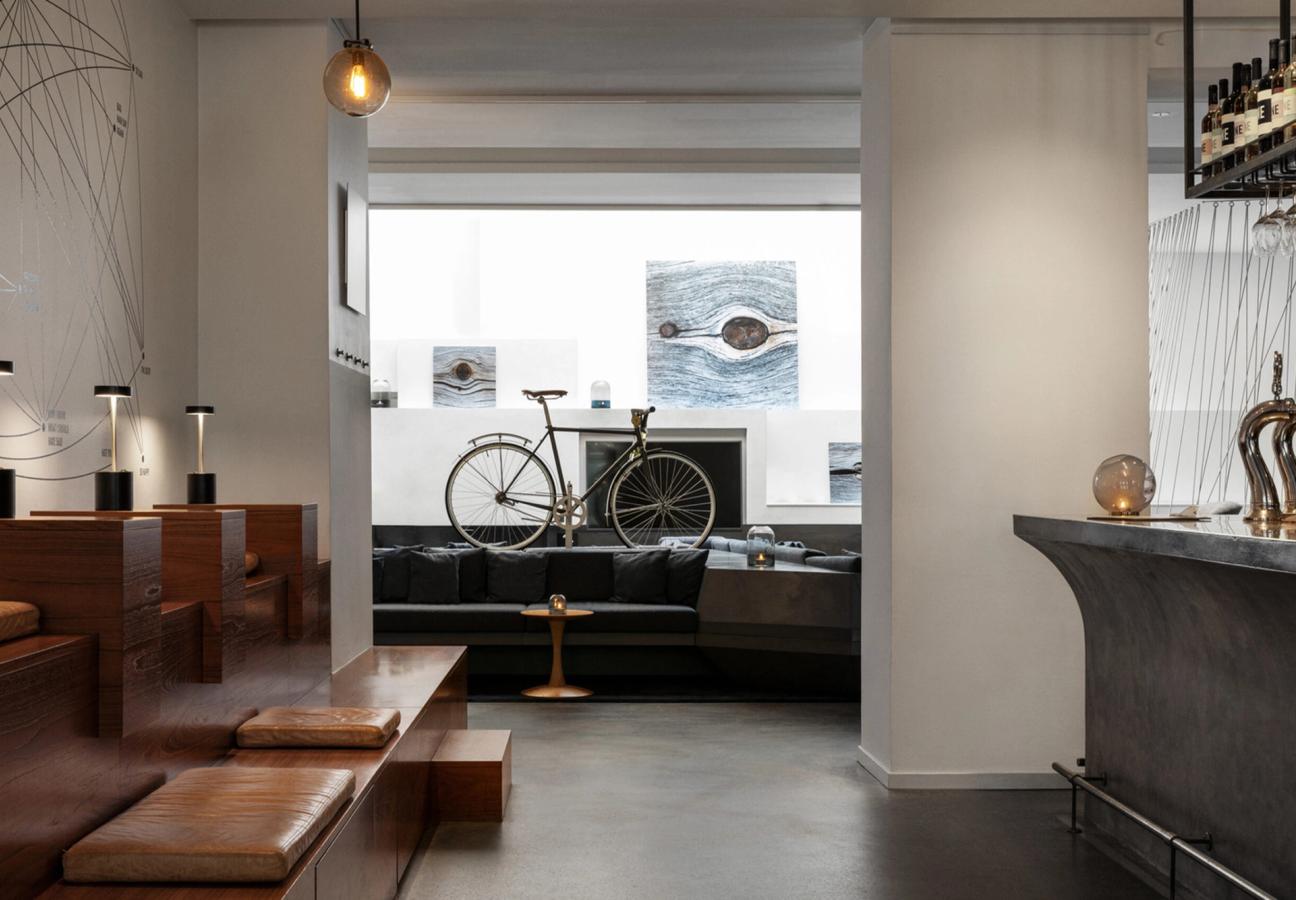
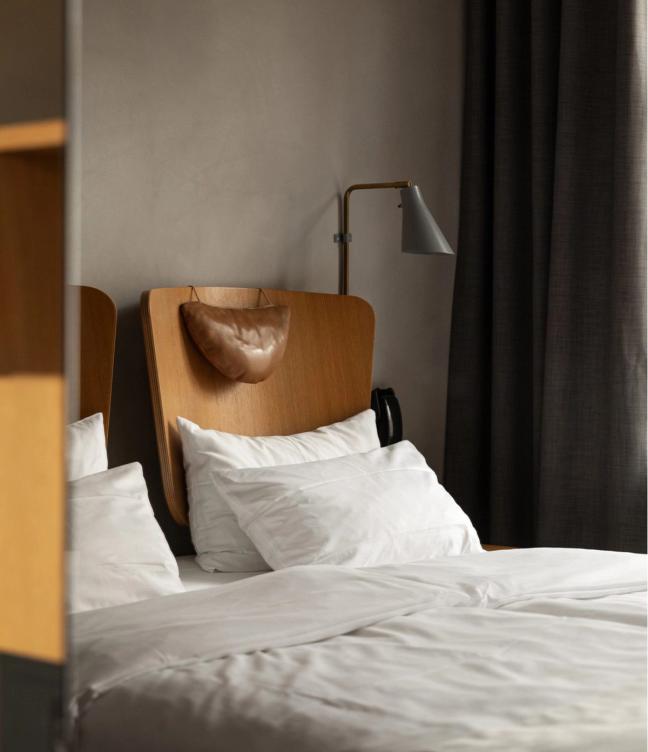
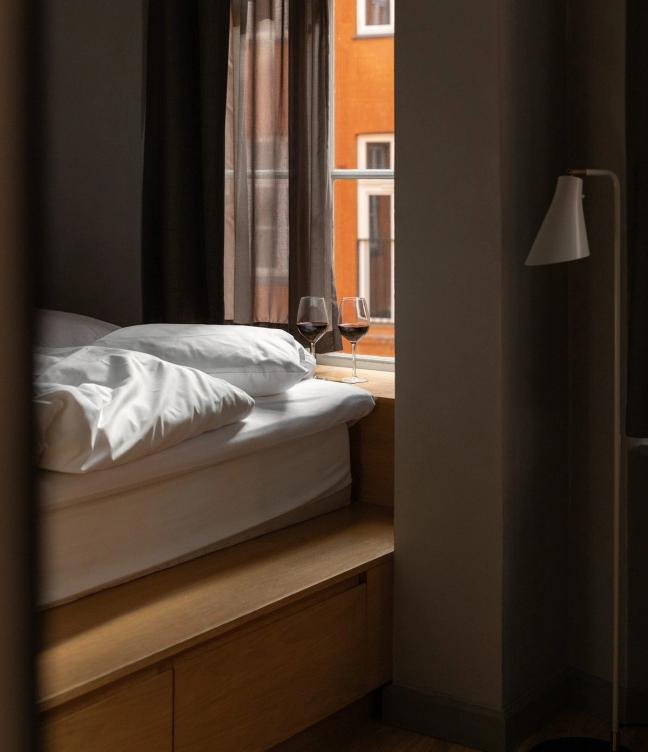
A long-running fixture within a local chain’s slew of design hotels, Hotel SP34 attracts a youthful crowd with its medley of Danish style features – tan leather, convention-pushing lighting – and the staff’s informal, at-ease ethos. The considered aesthetic within guest rooms is defined by the open-unit wardrobes; bed headrests whose lunar outline brings to mind Finn Juhl’s ‘Chieftain Chair’; and a rough-yet-refined scheme of white linen, swathes of darkwood, and plastered walls. Plump for a room facing the street, so as to wake up to the sight of pastel-hued townhouses out front.
It is, however, all about the public areas: breakfast offers the promise of an organic spread, and when evening comes, and wine hour is open, the main lobby – which looks more members’ club than check-in desk, with its bevy of modular sofas and tiered, bleacher-like benches – seems to be the postcode of choice for half of the city’s creatives. If the office calls and emails need to be fired off, a cluster of ground-floor workbenches awaits.
Nimb
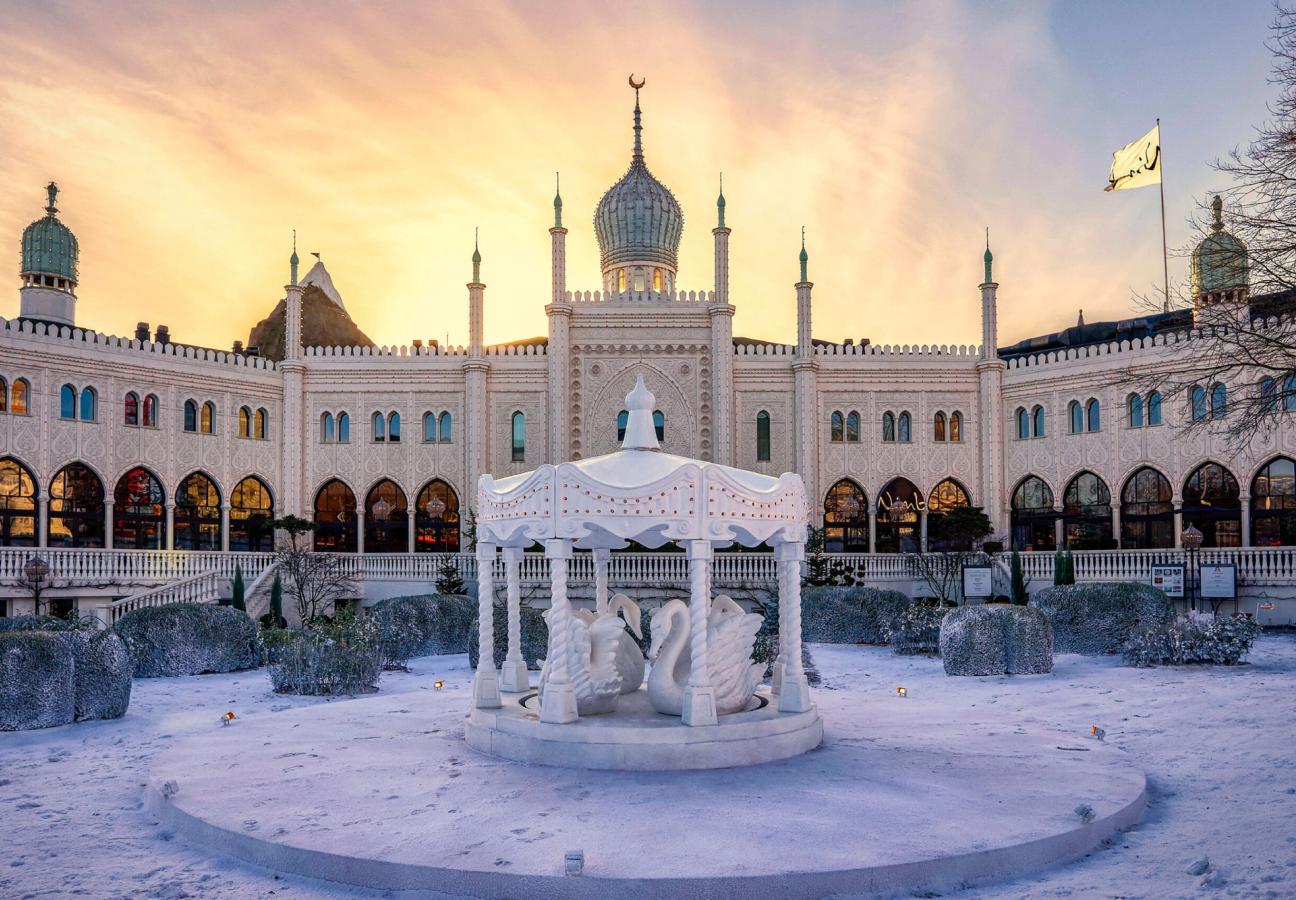
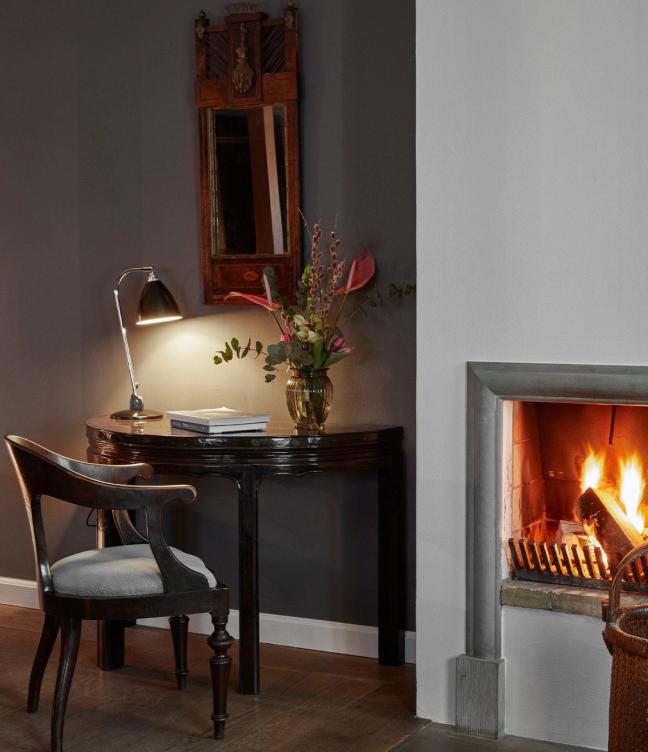
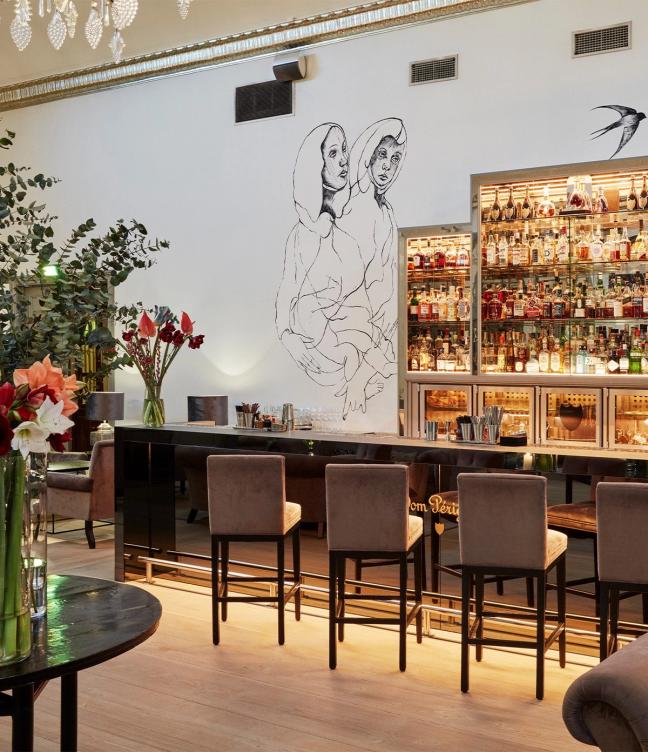
In Copenhagen’s legendary theme park, Nimb’s draw is the Disneyfied luxury, its Moorish-palace style a hyper-fictitious fantasy that swings away from the ubiquitous monotone schemes across the city, the marble exterior illuminated in the evenings by the gleam of a few thousand lightbulbs. The 38-room count maintains the feel of a secluded-away quarters, and pads come equipped with a considered bazaar-like mix of antique finds, some with four-poster beds and free-standing tubs big enough to accommodate a stout rugby forward. If the stars align, the room you book will have a log fire, allowing you to perfume your airspace with the smell of warmth, smoke and an evening well spent.
The public areas are sizeable and magnificent, with open proportions whose unoccupied, vast stretches speak of the ultimate luxury in the world: space to think, space to explore, space to walk aimlessly through. Whereas scores of global hotel bars usually occupy a space the size of a small Basque wine bar, Nimb’s is ballroom in its proportions, with whimsical libations that take inspiration from Middle Eastern folktales. The ‘Signature Massage’ at the subterranean spa, which comprises a flurry of cool, soothing touches, does magical things for the senses.
Sanders
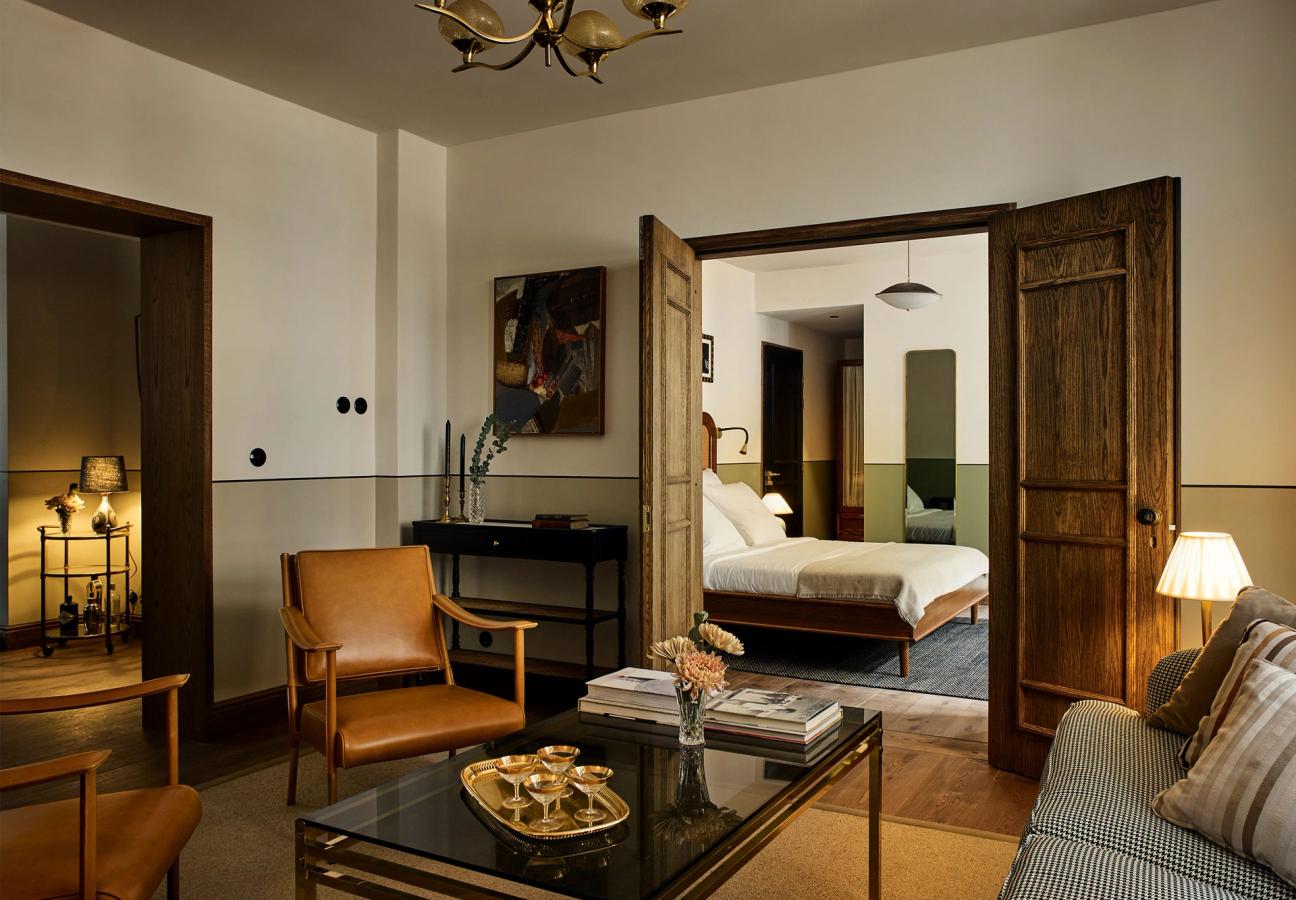
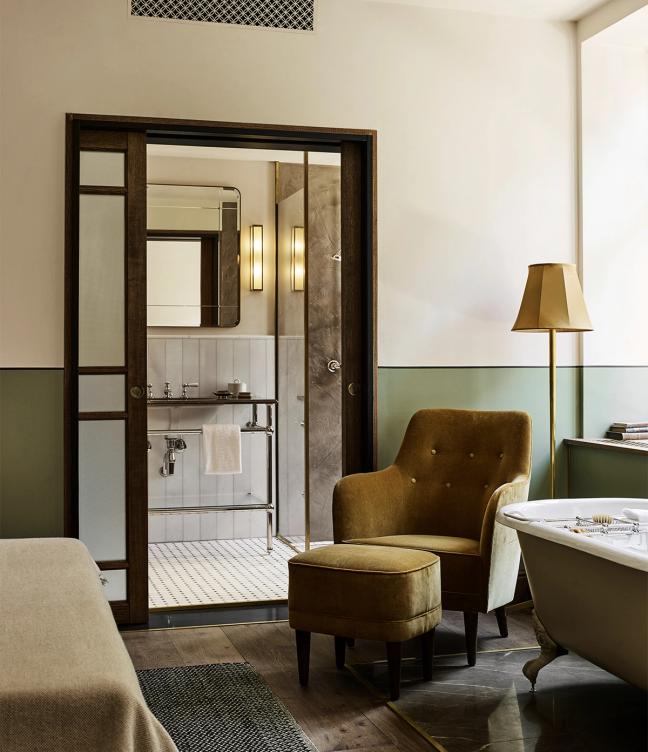
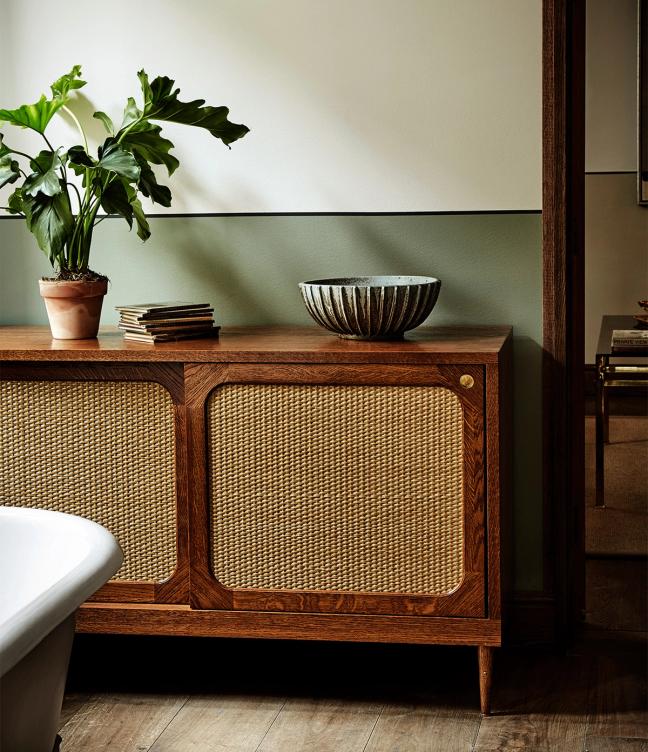
When Sanders, a handsome stay stationed across a trio of townhouses and run by the one-time ballet dancer Alexander Kølpin, opened in 2017, it was the talk of the travel-press town, taking up plenty of spreads in Wallpaper* and Monocle and spoken about with a deep, deep love in articles across Condé Nast’s homepages. It was admired for its you-live-here ethos, and locals just couldn’t resist the call of the bar’s akvavit cocktails and the dimly lit corridors that possess a sort of warm, cinematic appeal.
Years later, it still holds down its position as the bolthole with that hard-to-attain quality of making guests feel as though they have their own Copenhagen address, eschewing the restrained Scandi design tropes for Lind + Almond’s sultry scheme that works together period-style rattan cabinets and bespoke velvet seating in the guest rooms; converges brass accents and stained-timber furniture and the golden glow of Carlo Scarpa’s chandelier in the lobby; and welcomes early risers into a tiny, tiled downstairs bistro that’s especially good for a breakfast spread of skyr and berries; tomato casserole; and runny-soft eggs.
The high-spirits roof terrace is where young Copenhageners in Salomon and NN.07 meet for drinks after a long week in the studio, and another draw is that the (non-alcoholic) mini bar in each room is complimentary. If you were to ever find the will to leave the property’s footprint and go exploring – remember that Copenhagen is one of the greatest eating cities in the world – just know that Barr, where the plate of schnitzel is a rite of passage for travellers, and Apollo Bar, a favourite among the artistic set, are within a short walk.
Hotel D’Angleterre
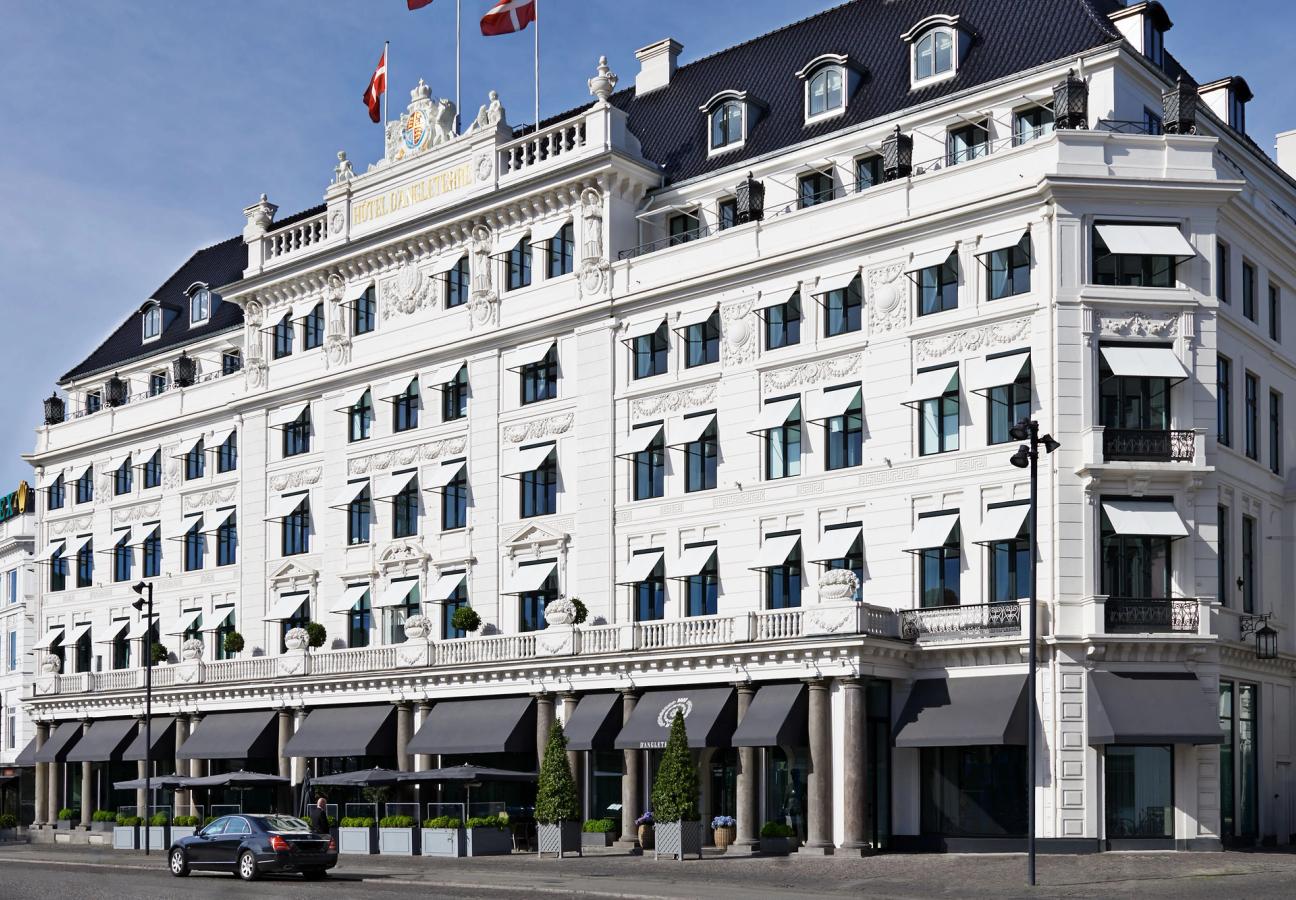
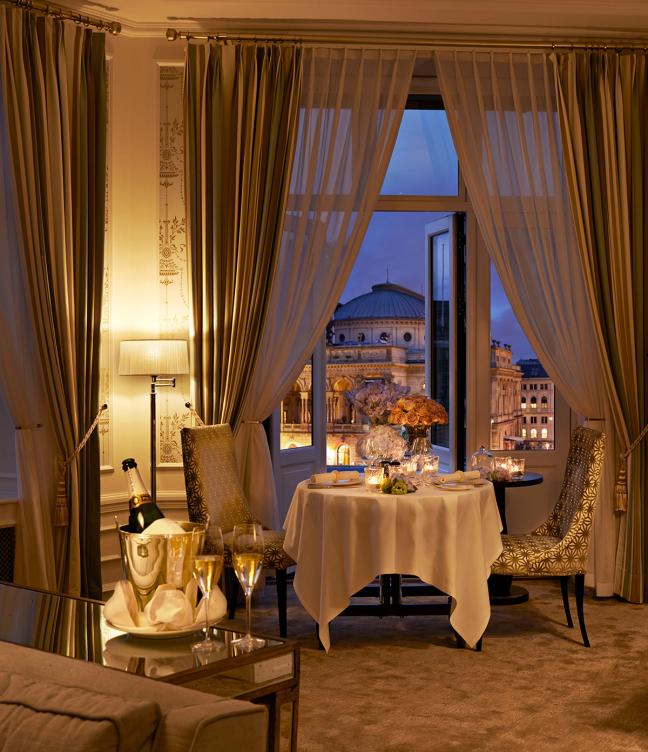
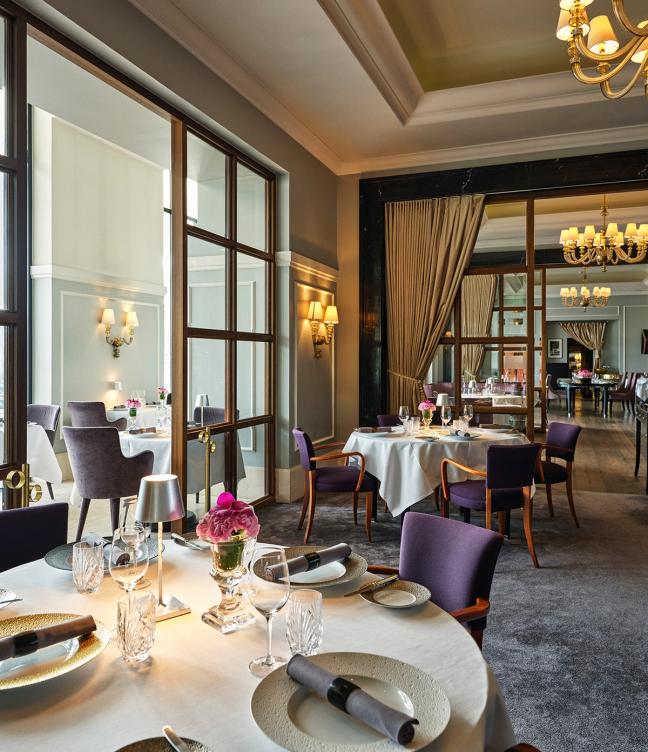
Hotel D’Angleterre is exactly what Claridge’s is to London, or what the Four Seasons was to the 1990s – the one that does it best, the homing device for those who like the velvety pleasures of hotel life, the special-occasion scene that is destined to be etched forever into the memory. For close to three centuries, the five-star stay – what the travel ‘zines may label as a grand dame – has been stationed in Copenhagen’s largest plaza, its rigid Neoclassical silhouette an essential fixture in the low-lying city skyline. Hans Christian Andersen used to rest his head on the pillows here, and the Christmas light switch-on is a modern-day local spectacle, adding colour and joy to dark Danish winters.
A two-year-long revamp in 2011 jettisoned the design mistakes of the mid-century, with original trimmings and fixtures – fireplaces, cornices, and corridors that were originally built wide enough for crinoline-wearing women to walk past each other with ease – restored. A restrained colour scheme of grey, cream and light splashes of purple were introduced, as were the chandeliers, the Bang & Olufsen Tech, the floral arrangements and the generous proportions, meanwhile the Balthazar Champagne Bar and restaurant Marchal – where Jakob de Neergaard deals in pure pleasure, drawing upon great produce such as tins of caviar, oysters, turbot, and langoustine – are easy-to-love places where you can forgive the calorie-count racking up. After all, the subterranean pool can help you get back on track.
The tables to reserve
Jatak
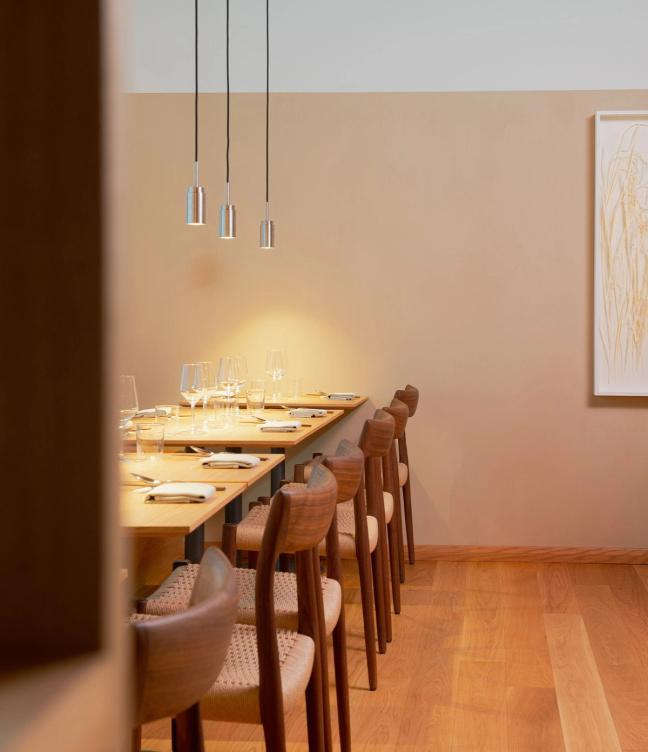

Jonathan Tam is a Swiss-army-knife of a chef, one who shifts between dining-room duties with the ease of a positionless Knicks player, one moment detailing the botanicals and fermentation process behind the glass of Muri Nuala in your hand, the next checking that the carrot noodles about to be placed in front of you have been cooked to the desired firmness.
In Tam’s warm, mellow restaurant, his debut project following the folding of Relæ, where he racked up the years as Christian Puglisi’s head chef, the scores of dishes seamlessly dovetail the Danish larder with the Cantonese and Vietnamese kitchens: a draped sheet of pumpkin cheung fun with a slip of chilli crisp; small chutes of squid that have been grilled and flavoured by celtuce and coriander; and an egg tart as bright as sunshine, with the wobbly rhythm of English jelly. The blue ribbon, however, goes to the sea urchin and grilled rice, a tiny moulded brick whose toasty smack evokes the scorched beauty of fan jiu, the always-covetable crusted layer of burnt rice at the bottom of a cooker.
Juju

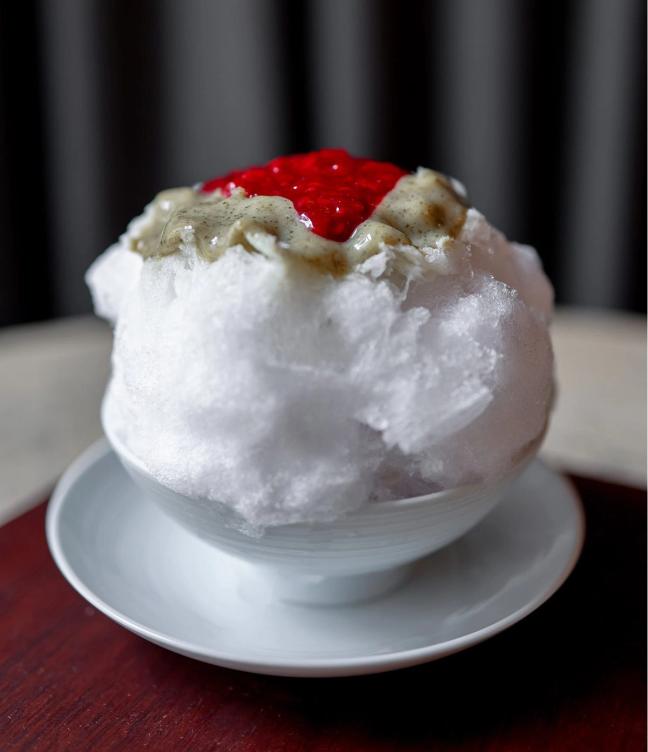
Kimchi jjigae is a wonderful creation, a hellpot-like stew that’s anchored by the deep, sour funk of fermented vegetables and customised depending on what’s in your halmoni’s pantry. At Juju, perhaps the most splendid restaurant in town that has a living-room-like groove and where the bitter-sharp Copenhagen evenings are best nixed by the majestic warmth of chef Youngjin Kim’s dishes, the kimchi jiggae mixes in half a dozen sweet mussels, snips of scallions, and large cubes of tofu to absorb the combative licks of spice – but half the pleasure with this dish, it must be said, comes from torching your mouth with great howls of heat and flavour.
The restaurant mission says that the menu is designed to be ‘shared between family and friends’, but you could easily spend a solo evening here digging into mounds of short-grain rice slicked with egg yolk and a magnificent spoonful of trout roe; diving for hot pockets of pork-filled mandoo; and taking rapid pants between bites of the twice-fried chicken wings. If you’re quick to finish it before it collapses, try the bingsu, a shaved-ice mound sweetened by the flavours of the season.
Kadeau
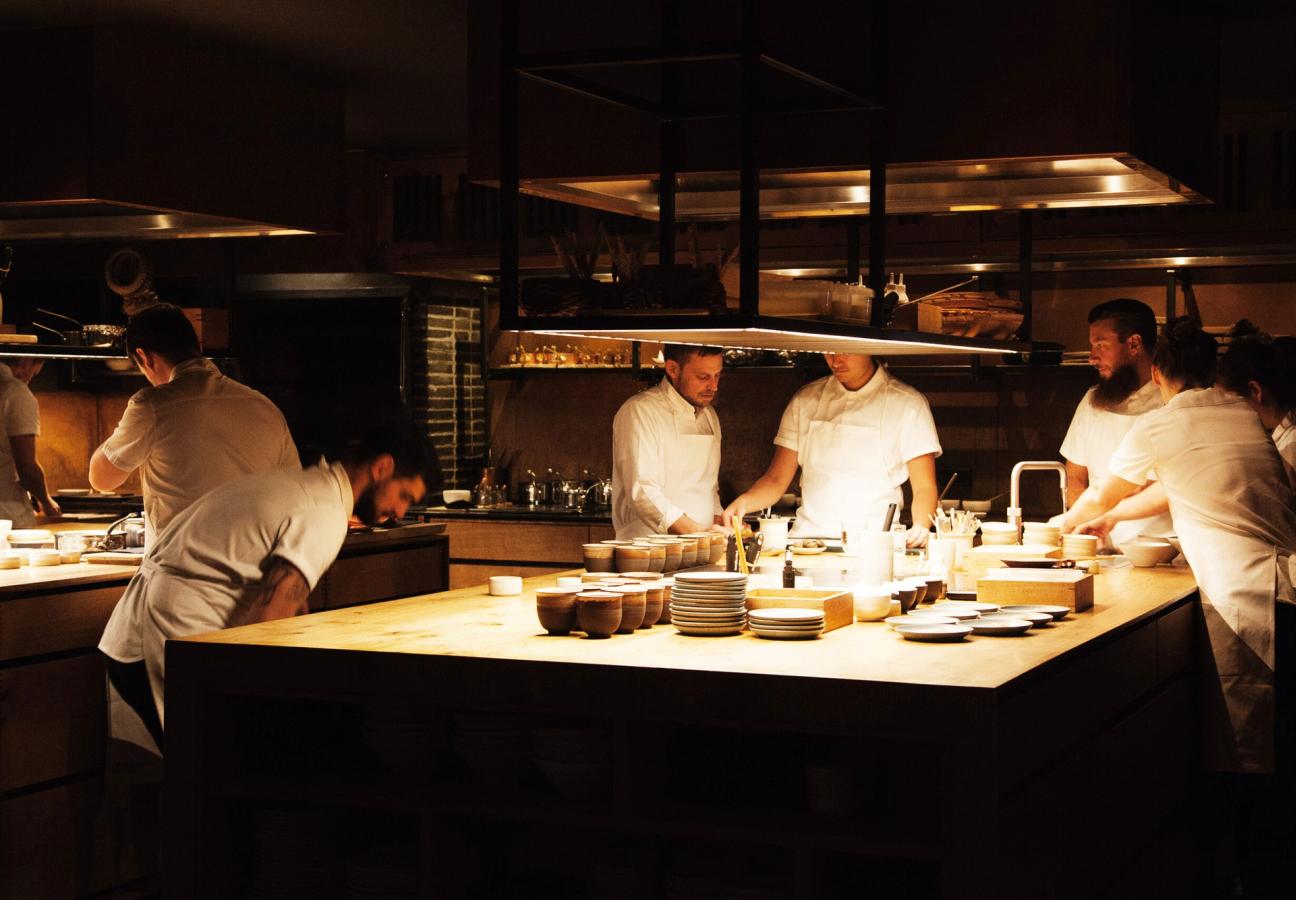
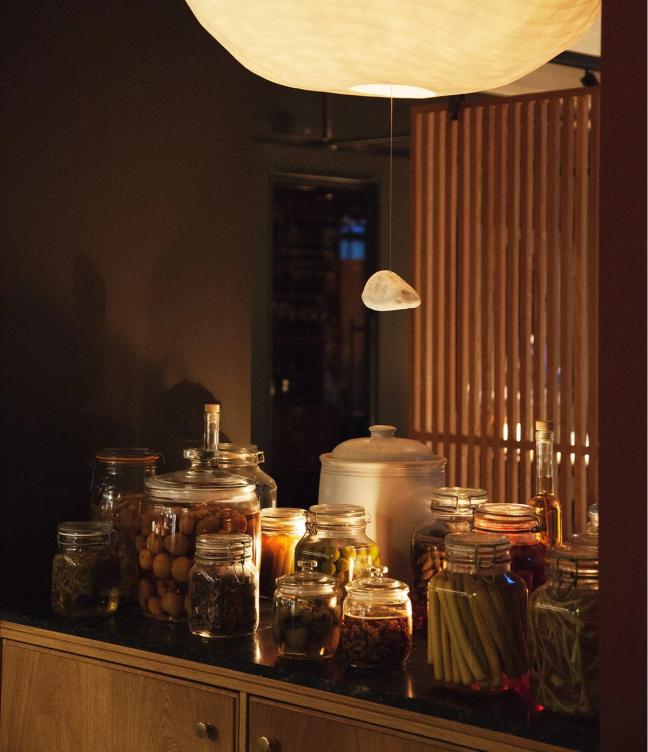
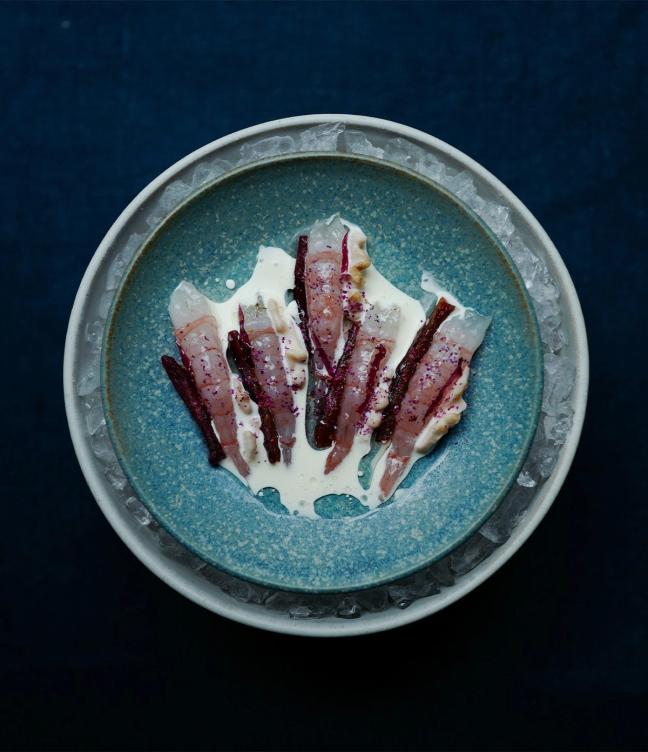
For years, Kadeau has been a reliable hit, where the the fluent, elegant evenings are exactly what you dream of when you thumb through the city’s dining guides: shelves that bow under the weight of jarred ferments, enough wood to fill a Dinesen warehouse, flights of ruby-red and opaque-white juices that you sip as though they were fantastic wines, arrangements of dried sweet tomatoes and blackcurrant wood; silky raw shrimps that ride on a cream flavoured with peeled walnuts and beach roses; and portions of wild-duck that thrums with the gamey depth of winter.
Nicolai Nørregaard, who runs the pass here, has never been a flashy chef, more of a restrained scholar of the pans than franchise cook, and it is perhaps in the desserts at Kadeau, which halves its year between a preservation menu in the colder months and a ‘growing season’ when the weather is fine, where he best shows his elegance: syrupy mulberries thickened by cultured cream and a splash of rose vinegar; and a warm saffron cake that has the sponginess of a glorious brasserie baba. An ice-cream of queen scallops? It is pure joy.
Propaganda
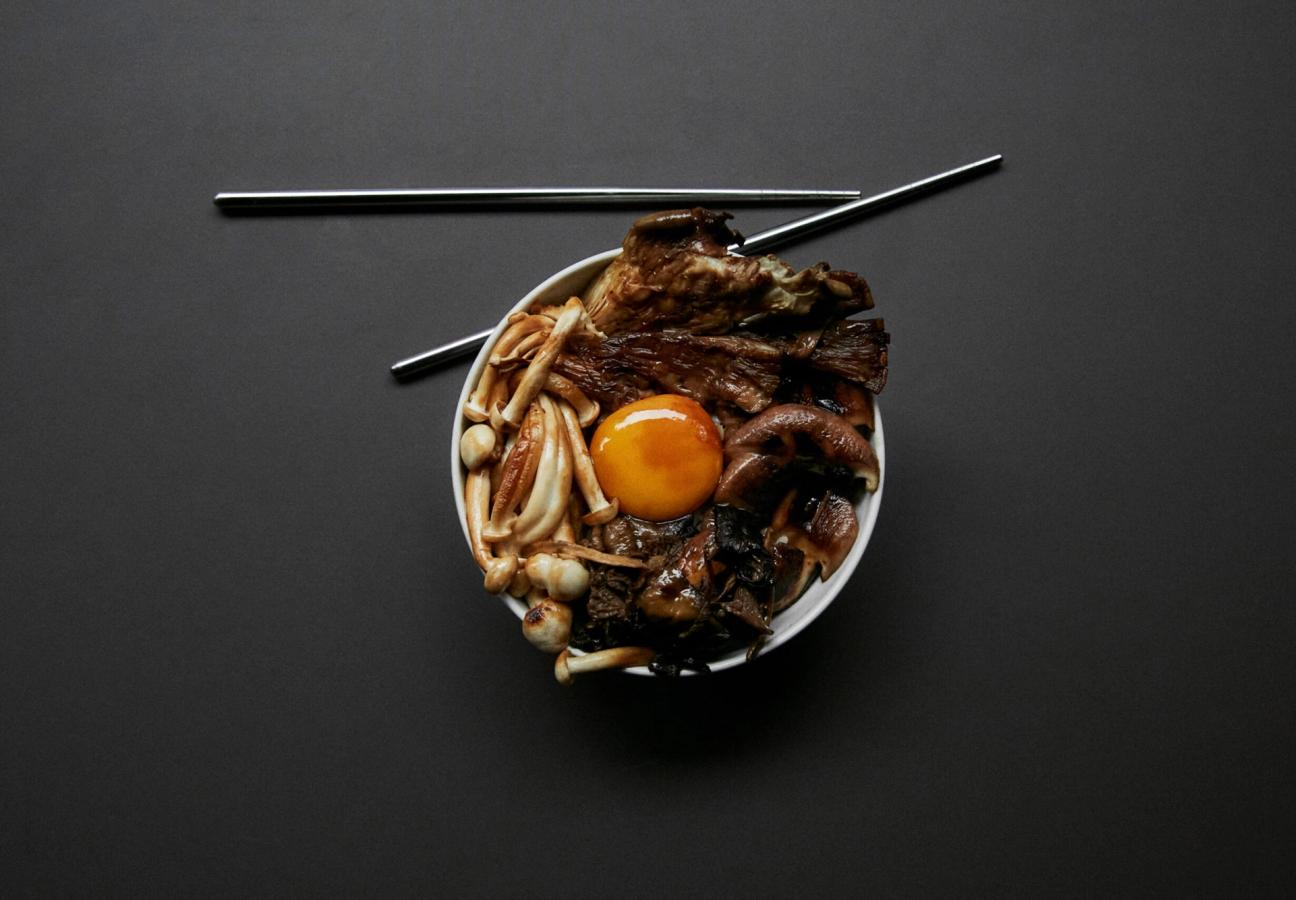
Electrified by heat and by the occasional slaps of richness, the statement-making, Korean-influenced menu at Propaganda is irresistible in a city known for its softer cooking. The great virtues that underpin many serious Copenhagen kitchens are all here to see – a commitment to sustainability, trusted farmers and the organic – but chef Youra Kim’s punchy palette, along with her dining room’s reverberating, dive-bar-style energy, helps her jolt against the grain, darting between the flavour spectrums: the honeyed whisper of fried-pumpkin mandoo; the deep, subtly smoked chew of squid tangles submerged in its own light-sapping ink, with radicchio and Thai basil; the sweet-savoury fried-chicken sandwich on gently toasted white bread; and the robust candy-salty soy glaze over skewered tteokbokki – rice cakes – with bouncy clippings of mushroom.
These are vibrant flavours that ring with the touch of a chef unapologetic in her terms and direction – everything that is so good about current cooking in Copenhagen.
Alchemist

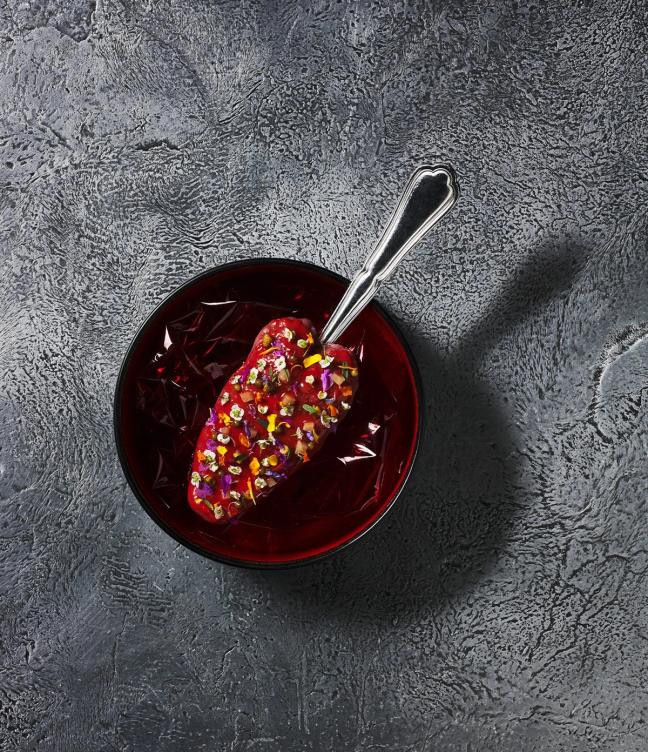
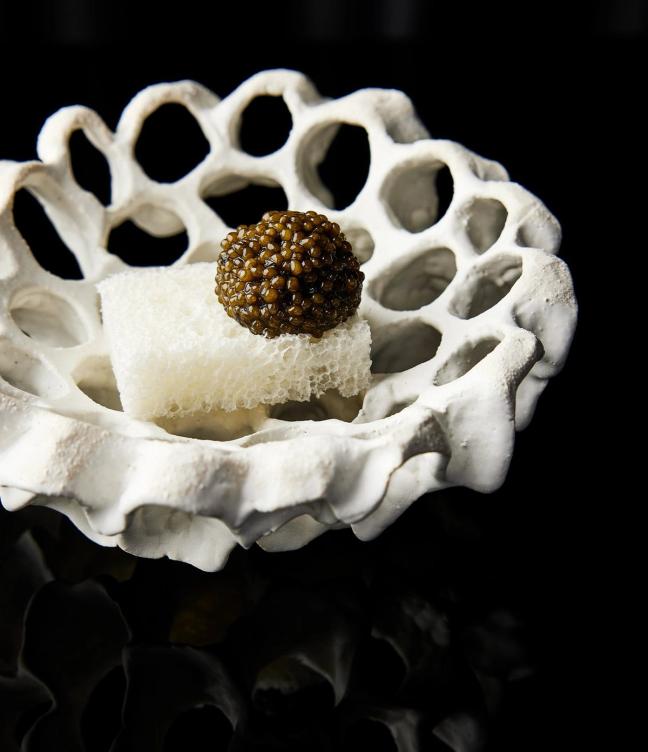
The mega ambitions of this mega-ambitious restaurant are best indicated by the length of its mealtime, seven hours of relentless eating and drinking and gazing and moving and questioning, a duration similar to that of a trans-Atlantic flight. As contemporary trends go, the concept of dinner as theatre has become a clichéd notion, and any menu that lists cocktails that foam or puffins that are spherified has been proclaimed to pack a modernist spirit, yet it is perhaps still appropriate to understand Alchemist – the Copenhagen restaurant where chef Rasmus Munk’s genre-warping mode of dining aims to dovetail the arts, social commentary and a global-influenced menu into a single evening – through a prism often reserved for stage drama.
Munk is hardwired to pushing the envelope on what food can be – in much the same spirit that the exotic cubes and transparent raviolis coming out of San Sebastián and Catalonia in the 1990s supplanted nouvelle cuisine’s purées and Troisgros techniques – and his space is an imposing, colossal one, the way a couple of stacked Hyatt lobbies would be, wide enough to house the Rebel Alliance’s fleet, stationed on the city’s outskirts. If you are well versed in the warmth of the city’s birch syrup and walnut seating, Munk’s wildly radical proposition likely won’t be for you. But if you’re game to sit under a planetarium dome that switches between post-apocalyptic visuals and sakura imagery, underwater landscapes and woodland mise-en-scènes; eating detailed dishes of butterflies, trompe-l’œils of lungs and drops of blood; being educated on invasive species and unlawful labour in the chocolate industry; and being in a nonstop blur of shock and admiration… well, it’s money spent wisely. There is no place quite like it on Earth.
Kødbyens Fiskebar
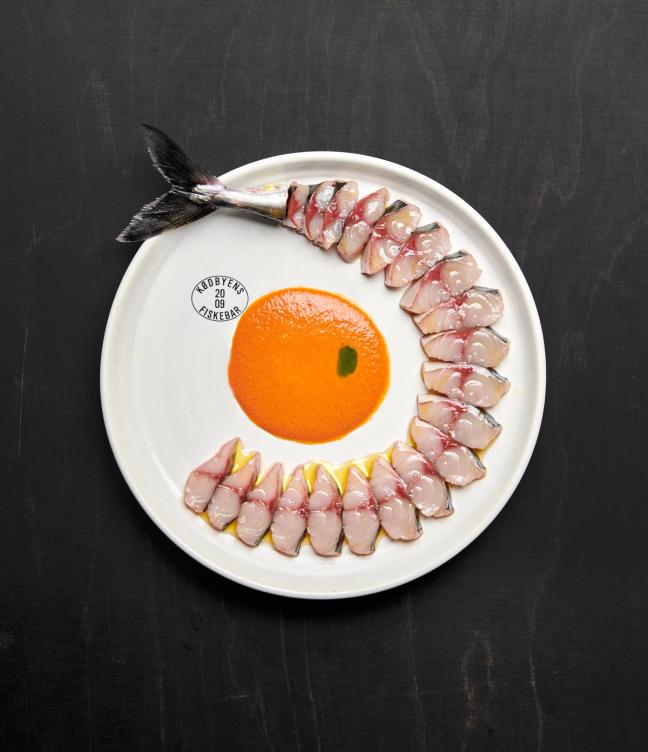
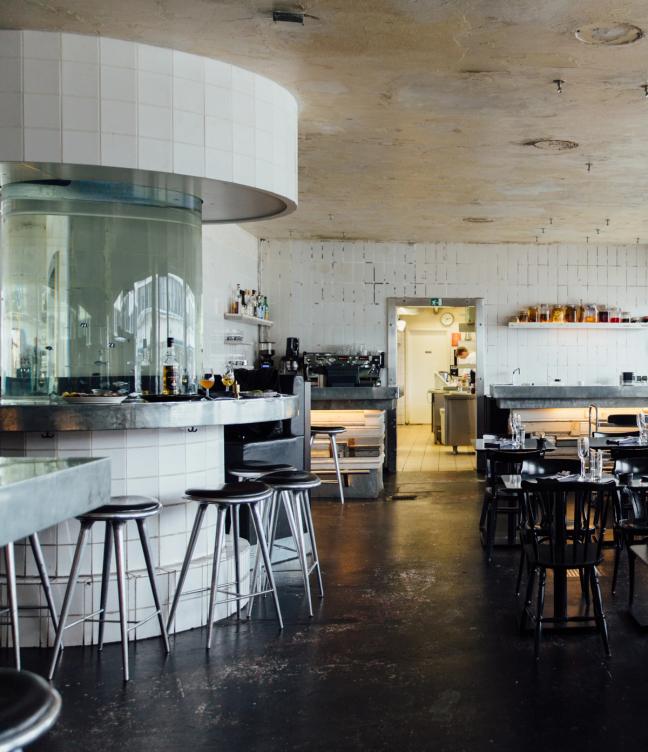
People fly to Copenhagen for all sorts of reasons: for the enlightening Noma experience, the trippy avant-garde evenings at Alchemist, the excellent black-sesame cookies and fruit bakes at Hart Bageri and the dripping beef patties at Gasoline Grill. Kødbyens Fiskebar, the city’s flagship shrine to seafood and fish, tends to be near the top of the travelling-gourmand’s restaurant crawl, and, as far as I can tell from the dim lighting, the procession of mussels that are carried through the dining room and the jumping heartbeat of Friday-night dinners, you come here to enjoy life.
For years, I’ve always appreciated Jamie Lee for being a true cook’s cook, the one who’s always directing the pass, visiting the fisherman, lovingly talking about the beauties of trout and restaurant gossip – and he shapes the menu here, his dishes splitting the difference between vibrant, abstract designs and homely pleasures. Some are left fairly unadorned to let the produce sing (lush slices of Danish mackerel curve around the perimeter of the plate, graced with only a few trickles of nice olive oil and a sauce of green juniper and tomato). Others have flavours amplified (slowly poached squid, sectioned into tagliatelle strands, is turbo-charged with a roasted-chicken-wing dashi, radish and lemon verbena; the vertical arrangement of monkfish with green tomatoes, crispy orpine and unripe strawberries, hit with a cascade of wild-garlic sauce, has brightness). Non-seafood items – beautiful peach tomatoes in their peak, artfully decorated with a mini-garden of sea lettuce, fennel, black garlic, caviar and bottarga; and a rich bowl of peas with buttermilk, dill and smoked cheese – simply show the marks of a chef in love with what the seasons deliver.
Bæst
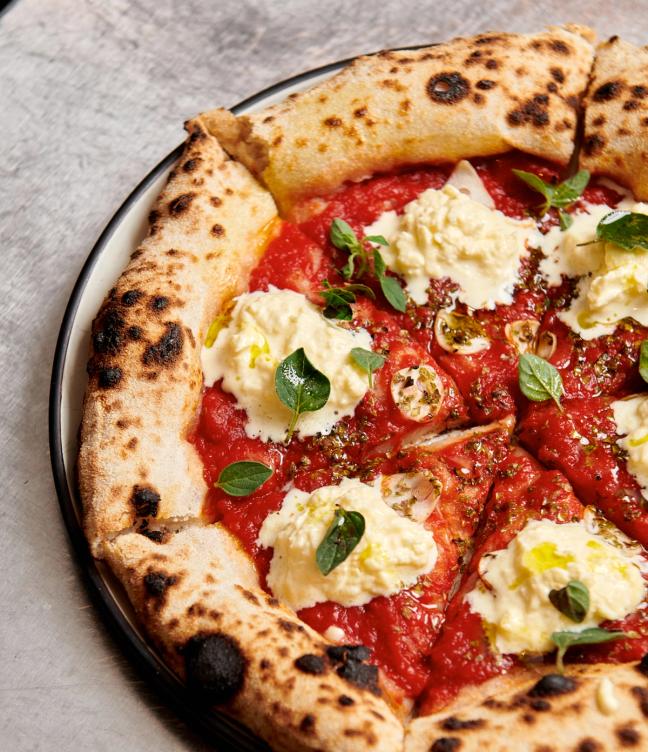
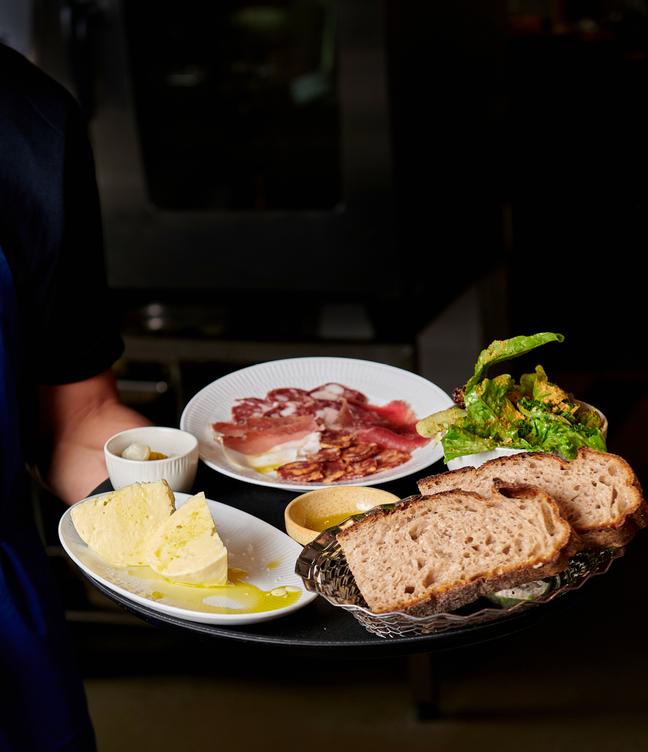
Pizza, in absolute terms, is a perfect food. The lava-hot sweetness of tomato sauce, the stretchiness of salty cheese, a handful of toppings – spicy sausage, perhaps, or a few charred vegetables of the moment – and the blistered, aerated dough all collide to form a messy composition of lust. At Bæst, pizza – stereotypically a cheap-and-easy source of dining – takes on a sort of profound quality. Christian Puglisi is known through the dining circles as the man behind Relæ and Manfreds, the now-closed restaurants admired for their devotion to organic produce and fantastic farming, and the chef continues that thread – married with his Italian heritage – at Mirabelle Spiserìa, where there’s ravioli with ricotta and nettle, and arancini filled with organic pork ragù and smoked scamorza.
His next-door pizza joint is a wonderful place of house-made charcuterie, hand-stretched mozzarella moistened with a lot of olive oil, and bowls of stracciatella flavoured with fruits and greens. But you’re really here for the pizzas that fire out the domed F1-engine of an oven: pizzas decorated with Danish new potatoes, rosemary and lardo; pizzas topped with sausage from HindsholmGrisen farm, pecorino, and shishito pepper; pizzas with charred bubbles; pizzas veneered with a dripping, sweetly concentrated tomato sauce, garlic and sprinkles of oregano, all thin and hit with high heat and made with the perfect mixture of caramelisation, tang, lushness and flop. If you were in Brooklyn or Naples, the bastions of pizza we know today, this would be the sort of slice worth queuing entire evenings for. After, try Rino VinoFino, the wine bar upstairs, and have a vermouth to reflect on it all.
The sights to see
Copenhagen Contemporary

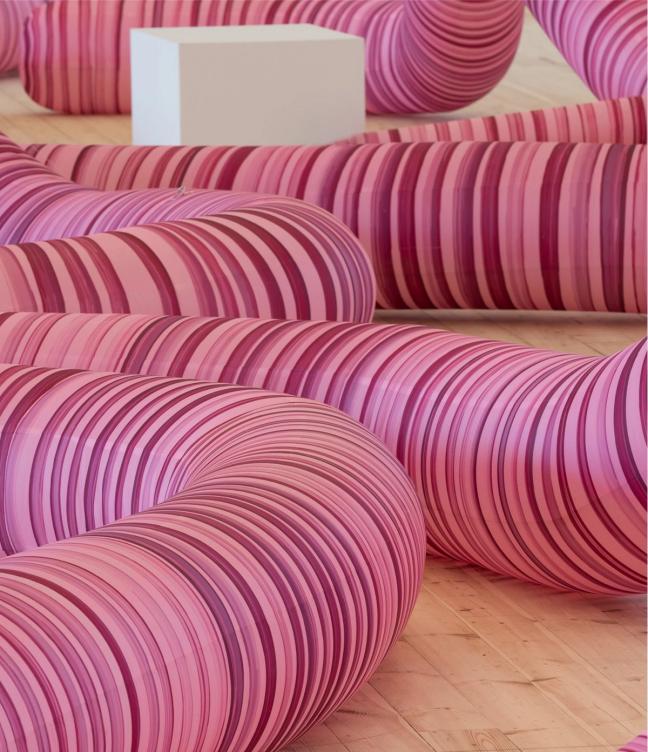
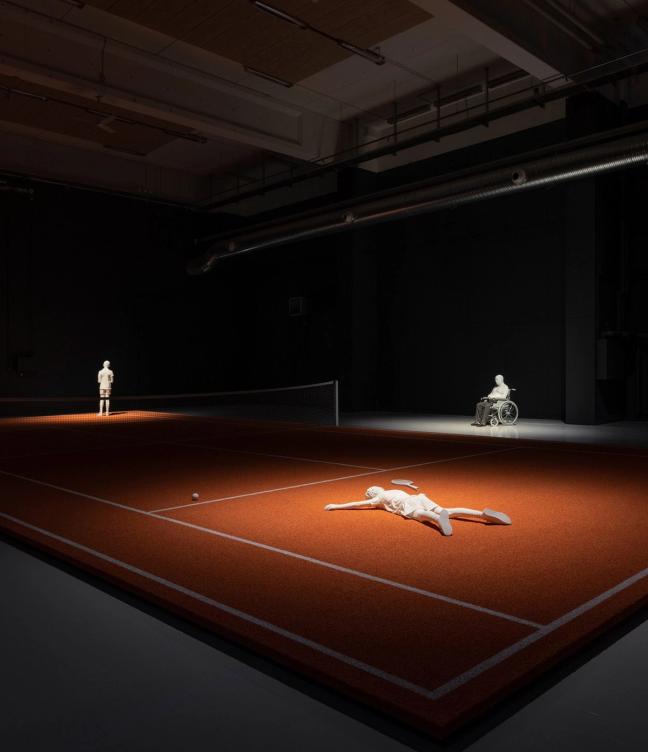
In a city that deals in the small-scale and polished, Copenhagen Contemporary is famous for its solid roster of large-format exhibitions that take over a one-time welding hall – Francis Alÿs’s endless reels of children playing games, say, or Doug Wheeler’s raised domed floor that aims to replicate a pilot’s viewpoint of the horizon. It’s a fine place to stretch the legs – and the mind – and you can reflect on it all at nearby La Banchina, where you’ll find coffee, a view of the water, and a great sauna.
Superkilen
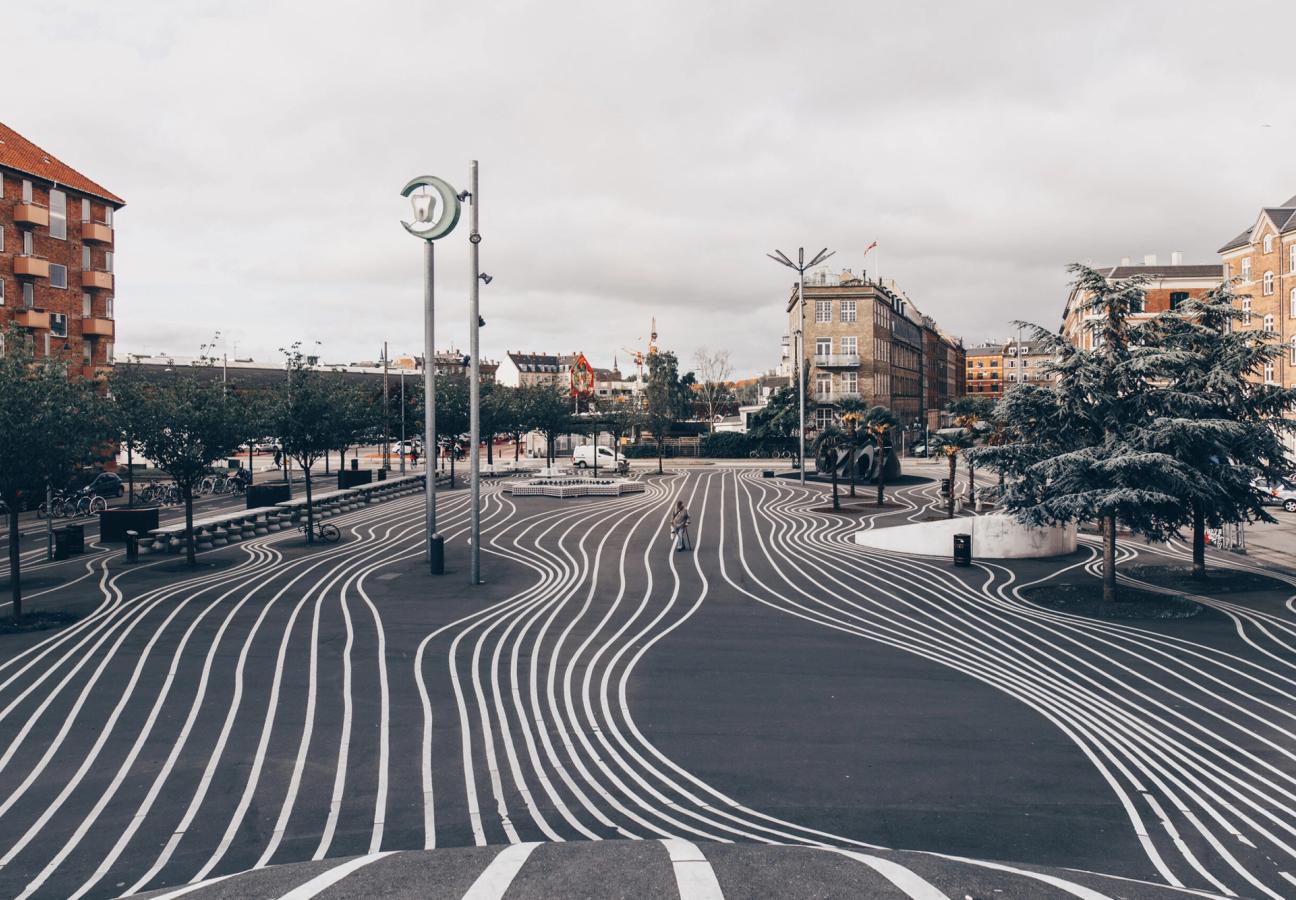
Images: Martin Auchenberg
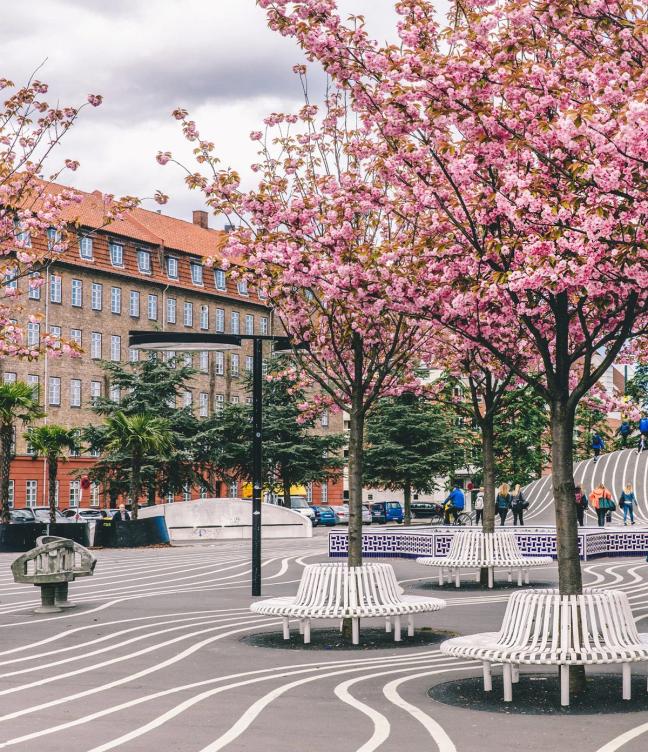
Image: VisitCopenhagen
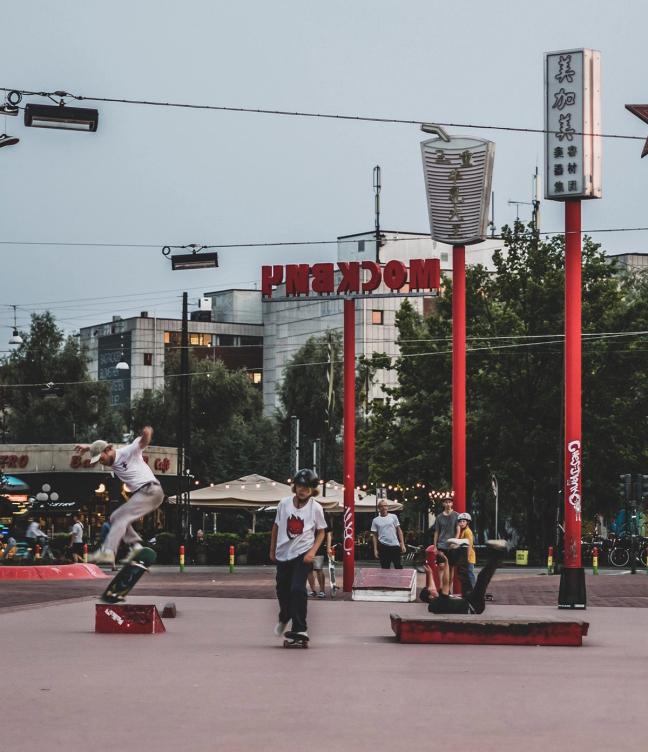
Image: Giuseppe Liverino
Bjarke Ingels’s radical blueprints are seemingly streaked across the continents – in a pyramid tower block on West 57th Street, in a twisting aluminium gallery in the Norwegian woodlands, and soon to be in a pair of leaning skyscrapers in Shenzhen. His recent Copenhagen works comprise the wedge-shaped power plant that showcases a ski slope on its side, and the chalet-style rooms at Noma. Superkilen, which leaves a pink carpet running through Nørrebro, is less urban set piece than a ground-level celebration of the neighbourhood’s diversity, with street furniture marking the roughly 60 nationalities represented here: a Thai-boxing ring, swings from Iraq, Japanese cherry trees, and a Moroccan fountain among them.
Louisiana Museum of Modern Art
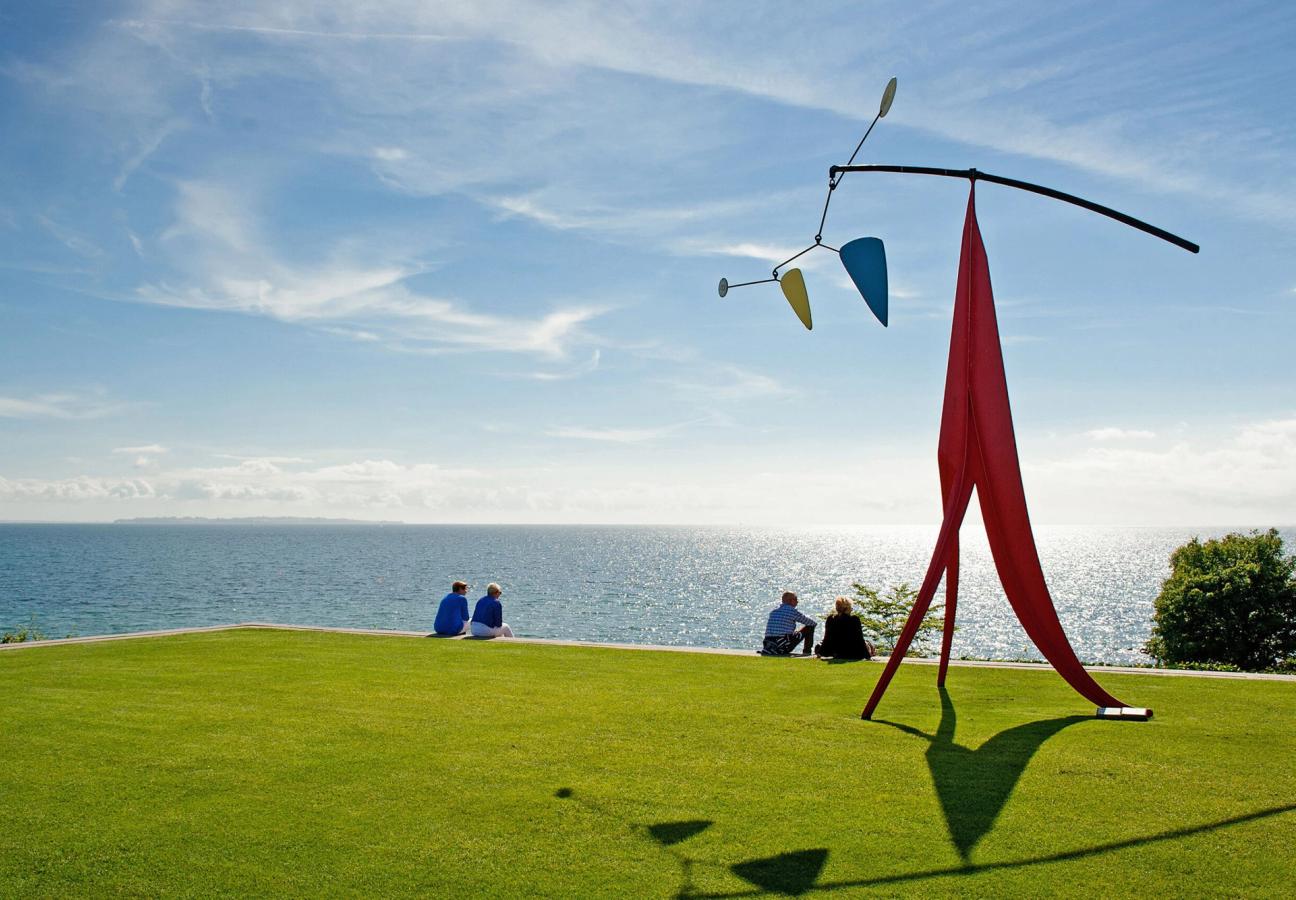
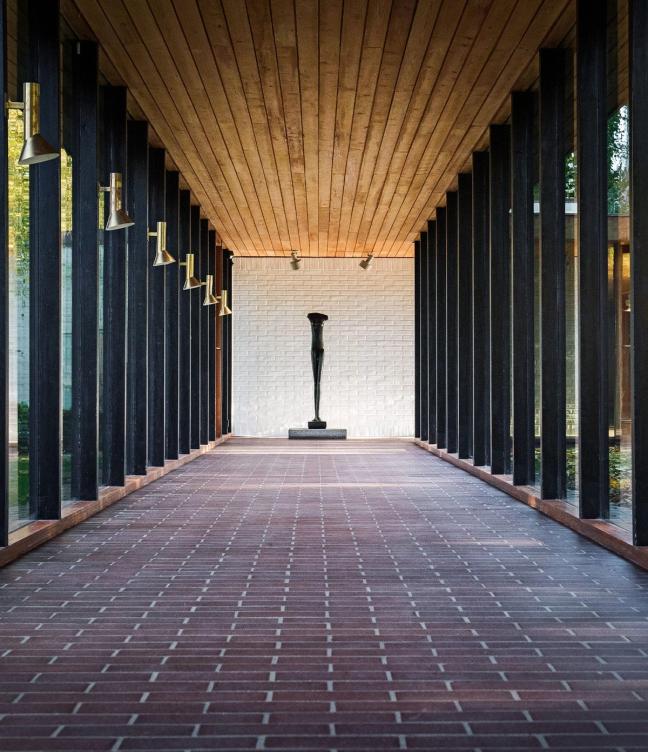
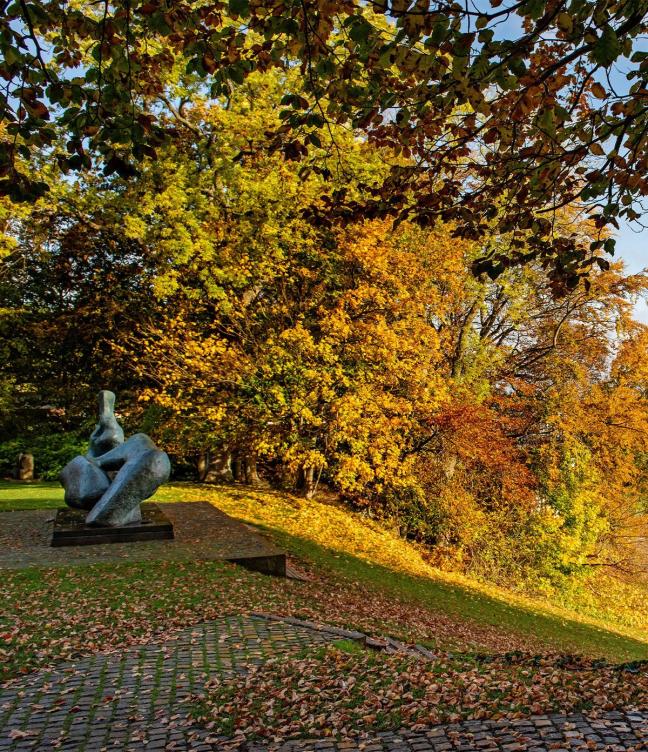
You’ll get the 30-minute train ride out of town. You’ll take the brief stroll from the station to the entrance. You’ll amble through the clusters of villa-style modernist spaces, all glass and wooden beams, and sometimes you might catch a glimpse of a Bourgeois, a Hockney or a Giacometti – the Kusama room is not to be missed, not just for its universe of mirrored lights, but for the likelihood that you’ll have the room to yourself. Outside is a sculpture park that balances on a hill, and the Øresund Strait is all out in front of you. It’ll feel as though you’ve met the end of the world; this is perhaps the best art gallery the world has ever seen.
Want more travel content? These are the 50 hotels every man should stay at before he dies...

Become a Gentleman’s Journal Member?
Like the Gentleman’s Journal? Why not join the Clubhouse, a special kind of private club where members receive offers and experiences from hand-picked, premium brands. You will also receive invites to exclusive events, the quarterly print magazine delivered directly to your door and your own membership card.


